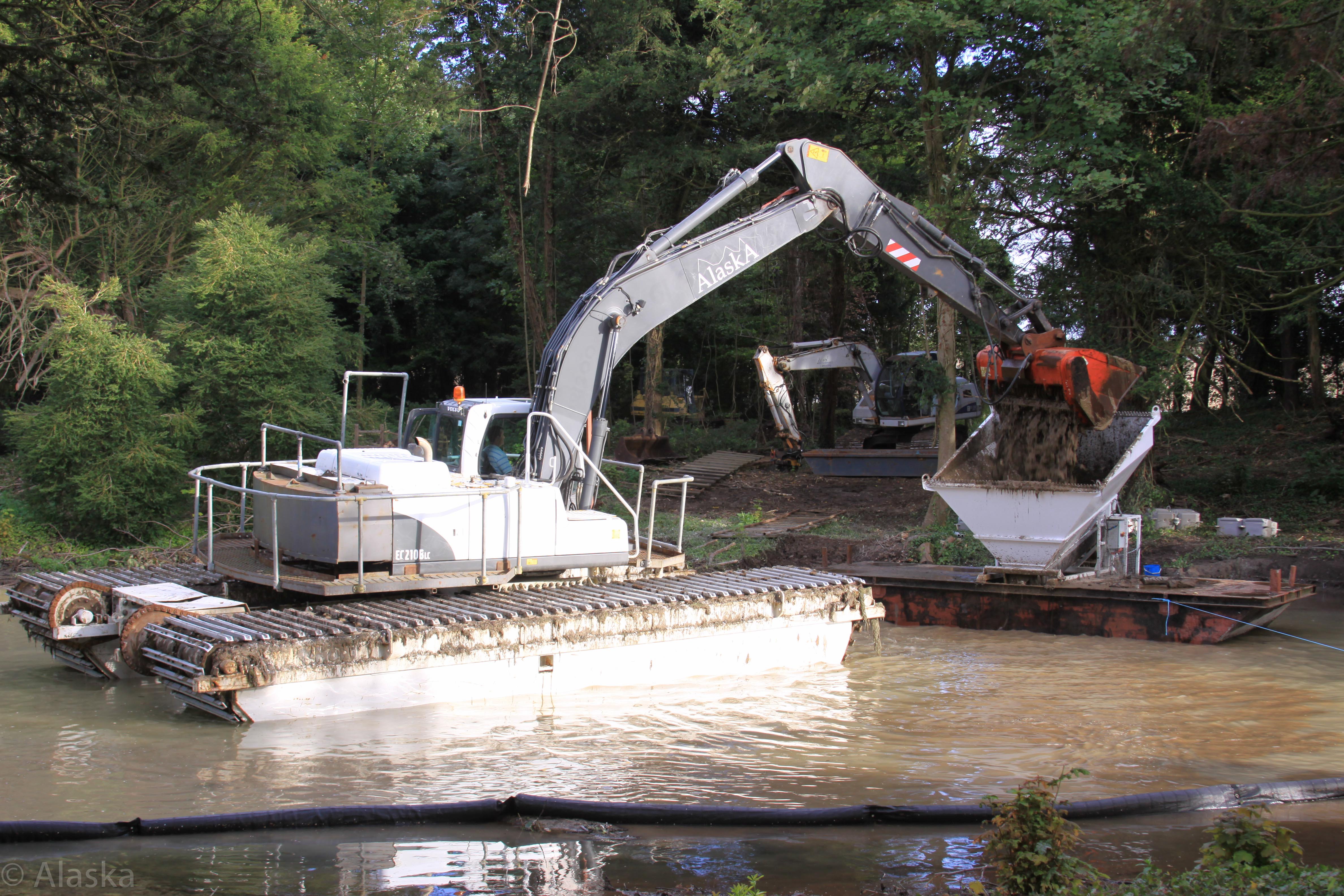
Attracted by the small and mini dredges DAE Pumps offers, like the Sediment Slayer and Silt-Bot, pond owners look towards these units to be able to reach the center and edges of the pond. These pond owners are in search of a product that can help them complete their job of cleaning and lowering their pond. A complete drain and excavation are likely out of the question for many of these pond owners. Pond owners resort to a variety of methods, like excavation to clean the outer area of the pond but cannot get to the center with the excavator’s arms reach. Looking to clean the pond and increase the water level by pond dredging, pond owners need to remove a couple of feet of sediment and recirculate in clean water without disturbing the current wildlife. Over time, ponds start to get filled up with sediment and if not constantly maintained, they get mucky and lose their water level. They want to know how to dredge their large ponds. When the bottom is cleared of silt and debris, refill the pond.Owners of a large acre plus pond need an economical solution for pond dredging and cleaning their prized watering holes. Remove the silt and relocate it to another area where it can be mixed with soil so it does not recontaminate the pond. Scrape the bottom of the pond with the excavating blade. Do not drain the water into a sewer system or other waterway, such as a local stream.Īllow the pond bed to dry out so the machinery does not become stuck while cleaning out the silt. Direct the flow of water toward an area that can accept the water without flooding any roads, driveways or other features. At first, this will be after each pass eventually, you will need to empty the bucket every few passes as you collect most of the silt from the bottom.ĭrain the pond using the pump to expose the bottom surface of the pond. Empty the bucket after it is no more than half full. The barrel scrapes silt as it goes across the bottom, and the water escapes through the lid. Use the machine to drag the barrel back and forth across the pond. Secure the cable to a bobcat, or to the ball of a tow hitch on a truck. Drill a large number of holes in the lid of the barrel with a 3/8-inch to 5/8-inch bit. Do not just deposit it on the bank of the pond silt is light and is not true soil, so it will wash right back into the pond with any rainfall.Īttach a heavy-duty steel cable to a 55-gallon metal drum with a lid.

Mix the dredged silt with compost or other soil to re-use the material. The silt will feel soft and mucky, as opposed to the true bottom of the pond, which will be thick mud that gives some resistance when the shovel contacts it. Take care not to dig too deeply unless you desire to increase the depth of the pond past the built-up silt layer. Scrape the silt off the bottom of the pond with a shovel and deposit it in the wheelbarrow.


 0 kommentar(er)
0 kommentar(er)
